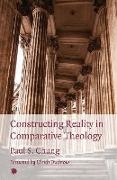Read more
Through an examination of Christian interaction with other religions, Paul S. Chung constructs a theology of comparative religion. In the course of this construction, he employs the work of Ernst Troeltsch, Robert Bellah, and Karl Barth, while offering case studies of transformative interaction between Buddhism, Christianity, and Islam. Chung¿s interdisciplinary approach opens up new avenues for inter-religious understanding and melding, for instance exploring the development of a Protestant Islam. Throughout, he provides innovative conceptions of the religions involved and the realities they assert.
About the author
Paul S. Chung (Dr Habil.) specialises in theology at the University of Basel, Switzerland, and in sociology of religion at the University of California, Berkeley, CA. He was previously associate professor at Luther Seminary, St Paul, Minnesota, and is nominated distinguished professor at Lutheran Theological Seminary at Chicago. He serves as Editor-in-Chief of the Historians¿ Debate ¿ Public Theology website and teaches in Berkeley.
Summary
A fruitful interweaving of different theological traditions across Christianity, Buddhism and Islam.

